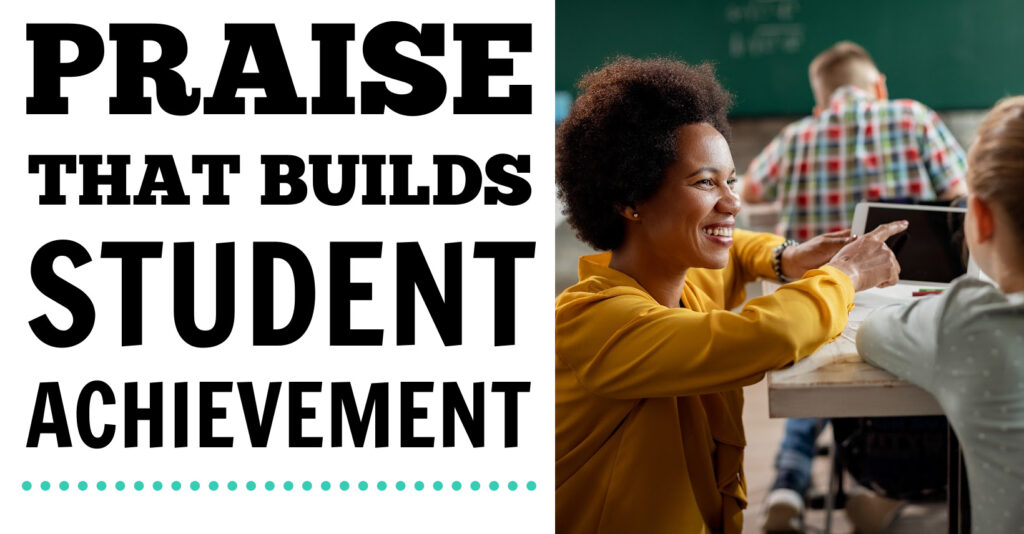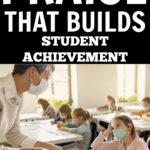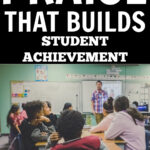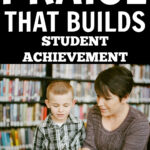I have come to realize that the language I use in my classroom greatly impacts student achievement. Teachers subtly build healthy and intellectual environments with their language of caring and support. Whenever I think about my own use of language, I can’t help but think about Peter Johnston and his book Choice Words: How Our Language Affects Children’s Learning. I first encountered this book as part of one of my graduate school classes. Of course, it quickly became one of my favorites because it transformed the way I spoke to my students.

There are several things I learned from Peter Johnston about praise and student achievement as I read and digested his book:
IDENTITY
The things we say about and to children regarding their identity will affect their achievement. If I tell a child in my class that he is a scientist because they ask such good questions or they are an artist because they capture the essence of a character whenever they draw a picture about a book, they begin to see themselves that way. The next time you ask something like “what are you wondering about?” you know who will put out a question to the group. If you ask, “who might draw a picture of the main characters in this book?” the student you suggested was an artist will be likely to volunteer. On the other hand, a negative comment like “guess who’s the last one to be ready again?” will suggest that we all know who is the slowest person in the class and the child will take on that persona.

AGENCY
Agency is another important concept that can be developed through the language a teacher uses. By agency, I mean the idea that our actions have an effect or consequence and thus impact achievement. As I teach, I must consider whether I am teaching strategies or if I am teaching a student to use strategies. There is a difference! Teaching students how and when to use strategies for solving words is different that teaching rules and puts the reader in charge of the problem-solving process. If I say, “You figured out that long word all by yourself! How did you do that?”, it puts them in the position of controlling their own learning. When I ask my students about what problem they encountered that morning, I am setting up the idea that we all encountered problems. It is a normal part of learning. When I ask about how they plan to go about solving that problem, it implies that planning will be required and that they need to think about what they know that might help with the problem solving. Independence in problem solving impacts achievement.

GENERALIZING
Generalizing is another important idea that I can develop in my classroom through language. By generalizing, I mean that the student takes what he/she know in one situation and applies it in another. One daily classroom occurrence related to generalizing is the reading and writing connection. Some language I now find myself using a lot is “that’s like…”. When I am looking at a new word in reading and see something within the word I know, that’s like writing what I hear when I say the word I want to write. Using mentor text to assist with writing is another “that’s like” example. “I can write that start of this story the way that Mem Fox introduced us to Koala Lou in the book about her that we read the other day.” Building those bridges between related learning experiences enhances our ability to be independent problem solvers..

QUESTIONING
How we approach questioning is another important part of teaching that impacts student achievement. Think about the kinds of questions you ask within your classroom. Do you use the IRE format? o Inquire o Respond o Evaluate In this sequence the teacher asks a question, someone responds, and the teacher evaluates the response as either right or wrong. An example of this kind of interaction that Johnston uses looks something like this: o I = What does sequence mean? o R = Order o E = That’s right The teacher already knows the answer to the question and is listening for the one right answer he/she is looking for. An alternate approach is to ask about the students’ questions putting the control about the wondering in the hands of the students with a “what are you thinking?” Some teachers do not feel comfortable with this because it is possible the students will ask questions the teacher doesn’t know how to answer. That’s okay because the class can work together to figure things out. Teachers are not bearers of all knowledge. Children can be both competitors and collaborators depending on the situation of the moment and either ask the best mathematician in the class for assistance or work together using various ideas to try to solve..

SPECIFICITY OF LANGUAGE
Specificity of language is the final important idea from Johnston. When praise is specific, the students learn exactly what it is they are doing well. “Good job” and happy faces do not tell the student anything. “I like the way you used the first part of the word to help you get started.” Or “We used to have to talk about working quietly, and now you do that automatically.” What am I doing well and what do I need to work on is important to understand to grow as a learner.
All these ideas need to be used consistently and in a genuine way. We can’t get away with isolated words, phrases, and sentences Our tone, voice, and body language communicate the feeling behind our message and students are quick to pick up the sincerity of our words. When students question the why of the words used (why is the teacher saying that?), the impact of our language is less, and student achievement is sacrificed.



Leave a Reply